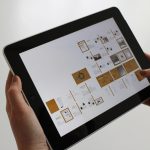Surety Bond Professionals is a family owned and operated bonding agency with over 30 years of experience. With access to a broad range of surety markets, our expert agents are ready to assist with all of your construction bonding needs.
What is the Internet of Things?
Oracle defines the Internet of Things (IoT) “the network of physical objects—“things”—that are embedded with sensors, software, and other technologies for the purpose of connecting and exchanging data with other devices and systems over the internet.” These devices can be anything from household appliances to sophisticated manufacturing systems. The number of connected IoT devices is expected to reach 22 billion by 2025.
The IoT is made possible by low-cost computing, cloud storage, data analytics, and mobile technologies–which allow physical things to collect and exchange data without intervention by humans. The IoT exists at the intersection of the physical world and the digital world and is becoming increasingly helpful in construction for budgeting and resource management, among other things.
How Does the IoT in Construction Apply?
IoT technology holds great potential for increasing efficiency, productivity, and safety in the construction industry, largely because it allows construction firms to respond quickly to changing requirements. There are several important ways in which IoT solutions will benefit the construction industry.
Tracking Tools and Equipment
Tools get misplaced on a construction site. Equipment malfunctions. Vehicles need to be serviced. When all of those assets are equipped with IoT-enabled sensors, construction managers know where everything is at any time and can schedule preventive maintenance or repairs. Downtime decreases, and the useful life of tools, equipment, and vehicles is extended. Repair costs plummet when predictive maintenance ensures that potential problems are averted before they become actual problems.
Machine Controlled Equipment
Machine control of construction equipment works in much the same way as self-driving cars. It uses measuring technologies such as light detection and ranging (LIDAR) and global navigation satellite systems (GNSS) to automatically adjust heavy equipment to grade, pave, drill, or pile large areas with unprecedented precision. Equipment progress, movement, and status are reported via IoT.
Just-In-Time Deliveries
The automotive industry pioneered JIT provisioning decades ago, so that parts and materials arrive at the point where they are needed exactly at the time they are needed. With the IoT, supply units bear radio frequency identification (RFID) tags and can be counted automatically. A new delivery is triggered when the supply on hand drops to a specified point, reducing downtime caused by delivery delays.
Concrete Curing
IoT-enabled devices, such as temperature probes and sensors embedded in concrete during casting monitor the curing of cement and transmit data to the cloud so that management can plan further work with great accuracy.
Remote Monitoring of Construction Activity
Surveillance cameras and measurement sensors allow construction equipment to be tracked and controlled remotely and the progress of workers to be assessed in real time. Construction managers can coordinate onsite activities from afar, reducing idle time, and improving safety by monitoring worker health and alertness. In potentially dangerous working conditions, employees may be outfitted with sensors that collect health data such as temperature and heart rate. Wearable devices can also alert workers when they are close to a danger zone and can transmit instructions to them.
Fuel Savings
Equipping large construction equipment and vehicles with IoT-enabled fuel sensors facilitates refueling management, which can save a lot of money on jobsites where fuel consumption can total thousands of dollars daily.
Building Information Modeling
BIM software creates intelligent models of buildings at the design stage, enabling engineers and construction managers to finetune construction plans. In the construction world, digital “twins” are commonplace—as-built and as-designed models that are continuously synced in real time based on data transmitted from the jobsite by IoT-enabled devices. This is invaluable for simulation and project planning.
The Future of IoT in Construction
It’s likely that IoT interconnectivity will transform the way construction firms plan and manage their building activities in the years to come. That may also bring about changes in the bonding requirements both public and private project owners may impose on construction contractors. For one thing, the use of IoT technologies reduces many types of risk, including the risk of a project falling behind schedule and the risk of workplace injuries. With the improved construction management practices made possible by IoT technologies, the risk of nonperformance and contract default may also be lower.
It will certainly be interesting to see how the bonding industry responds to the increasing use of IoT technologies in the construction industry.
Get A Quote
Our surety bond professionals will get you the construction bonds you need at a competitive rate.





